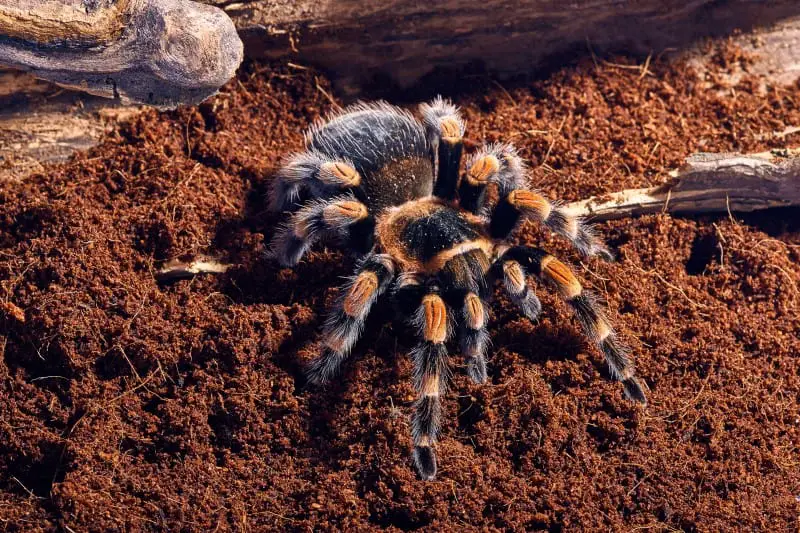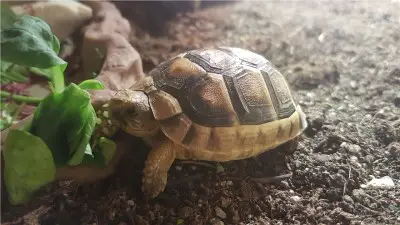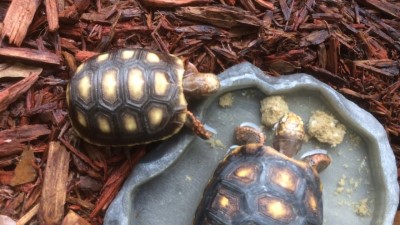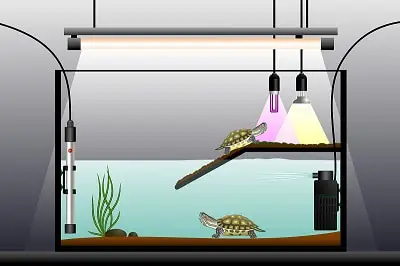If you are in a hurry and just want to find out what the best tarantula substrate candle is, then we recommend the Zoo Med’s Loose Coconut Fiber as the best one.
A lot of controversial topics surround tarantulas. Debates continue to happen even today.
One of these hot topics is about the right type of substrate. In choosing the best tarantula substrate, people often consider both their personal preferences and their tarantula’s natural living habitat.
And with so many different products on the market today and so many different opinions, it can be hard to pick the best one. This is why in this article, I will go over the best tarantula substrates and, more importantly, cover the essential aspects of a good substrate.
In this article, we’re going to review the following tarantula substrates:
- Zoo Med Loose Coconut Fiber Substrate
- Josh’s Frogs Loose Coco Fiber
- Zoo Med Terrarium Moss
- Besgrow Sphagnum Moss
- Exo Terra Forest Plume Moss
- Josh’s Frogs Vermiculite
- Zoo Med Excavator Clay Burrowing Substrate
-

8 Best Tarantula Substrates Reviewed
Choosing the right substrate is essential when it comes to the well-being of your tarantula. The reality is going with a poor quality substrate can be a health hazard for your tarantula. Many hobbyists have lost one or several tarantulas due to substrates that were of poor quality.
These are the best tarantula substrates:
1. Zoo Med Loose Coconut Fiber Substrate
Zoo Med coconut substrate is among the best ones on the market, which many tarantula owners prefer to use.
It comes in a few different sizes, from 8-quart up to 24-quart bags.
It is perfect for a wide variety of tarantula species. It is good even for humidity-loving species as it can retain moisture without that leading to mold problems. These coconut fibers can be used on their own or in mixes.
It is a green product. It is made from eco-friendly, renewable resources and does not have any toxic additives. Even better, once the time to replace it has come, you can safely compost or recycle it.
And best of all, it is very inexpensive—overall an excellent compost at an excellent price.
2. Josh’s Frogs Loose Coco Fiber
Not all owners like the tightly packed coconut fiber bricks, and if you are one of them, then loose coconut fiber may be more to your liking.
This coconut fiber is ideal for a variety of animals, including tarantulas. It is best for species that require medium to high levels of humidity in their enclosure.
Best of all, this is an eco-friendly and completely biodegradable product. In other words, you are buying something that can be used in many different ways and will not pollute nature.
The quality is great and does not leave anything to be desired—overall an excellent product.
3. Zoo Med Terrarium Moss
This peat moss is an excellent addition to any tarantula enclosure.
It can be tricky to find good, high-quality peat moss as even some of the products that are touted as clean and natural can still be dyed.
However, this peat moss by Zoo Med does not contain any dyes or toxic chemicals, or ingredients. It holds water well and will help in maintaining good humidity levels in the enclosure.
It is easy to work with, set up, and looks amazing. It is an excellent product at a very fair price.
4. Besgrow Sphagnum Moss
This sphagnum moss is another great product that will not leave you disappointed. It is suitable for both plant and animal use.
It is grown, cultivated, and air-dried in a very natural and sustainable way giving you a very naturalistic looking and safe product to work with. And on top of that, you will not have to worry about it containing any harmful chemicals and ingredients.
It is very clean without any debris, sticks, or dirt inside. The strands are long and soft with excellent moisture-holding capabilities.
5. Exo Terra Forest Plume Moss
If you are looking to add some moss to your tarantula’s enclosure, then this plume moss by Exo Terra is an excellent option worth considering.
This plume moss is easy to use, very cheap, and long-lasting.
It is a natural product that contains no harmful chemicals. It will provide the enclosure with some humidity without being too soggy or prone to molding.
6. Josh’s Frogs Vermiculite
Josh’s Frogs vermiculite is an excellent value pack, as it is very inexpensive, and you can use it in your tarantula’s enclosure.
It is natural and organic and is great for substrate mixes. It can easily be mixed with potting soil, coconut fibers, or peat moss.
And the rest of the vermiculite that is left unused can be used for plants, too.
7. Zoo Med Excavator Clay Burrowing Substrate
This clay substrate is an excellent product for desert species that don’t require a lot of humidity. It is good for burrowing and terrestrial tarantulas as once it dries, it allows them to easily dig their burrows and do as they please.
You can even form a small hideout for your tarantula, which it can use later.
It is a natural product containing no harmful chemicals, dyes, or oils that will add to the naturalistic look of any enclosure.
However, keep in mind that its consistency changes depending on how much water there is. If it gets wet, it will soften up again, get very sticky, and your tarantula will probably not like that.
It is best used mixed with other substrates to offer different substrate capabilities, or on its own, if you want something that can harden up.
8. Zoo Med ReptiSand
If you have a desert-dwelling species and would like to replicate its natural habitat, you can always add small amounts of sand to the substrate mixture.
Zoo Med’s ReptiSand is a good option as it is natural, non-toxic, and does not have added dyes or chemicals. It is very clean and can be used in substrate mixes. The sand quality is very high, though it is recommended to give it a good rinsing before use.
What Are the Best Types of Tarantula Substrates?
The best type of tarantula substrate can be a very subjective topic. For one thing, tarantulas are not picky animals, but that does not mean they can thrive on just about any substrate.
So let’s take a look at the most popular types of substrate among owners.
Coconut Fibers
Possibly the best and most commonly used type of substrate is coconut fiber (coir).
Coconut fiber was originally intended for soil enrichment and gardening. However, over the years, it became extremely popular among tarantula owners due to its properties.
Coconut fiber is very similar to regular soil in appearance. However, coconut fibers usually are free of harmful chemicals and additives, which is not the case with most commercially sold soil.
Coconut substrate is perfect for both arboreal and terrestrial species. Vermiculite, sand, peat, or topsoil can be added to coconut fibers to achieve different substrate compositions. That being said, coconut substrate can be used on its own with no adverse effects.
Peat Moss
Peat moss is used because it has excellent moisture retention capabilities, making it ideal for tarantulas that prefer higher moisture levels. Normally peat moss is used as an additive to other mediums, but it can be used on its own. However, if only peat moss is used, it is recommended to keep it dry; otherwise, it can mold if the enclosure does not have good ventilation.
Peat moss is also cheaper than many other mediums.
The biggest downside to peat moss is that it can be hard to clean.
Topsoil and Potting Soil
Keepers can use both potting soil and topsoil (the one used for filling holes) in tarantula enclosures.
In fact, these used to be very popular mediums. However, many owners do not use them anymore because potting soil and topsoil can contain fertilizers, pesticides, herbicides, and other soil amendments, which, while being suitable for plants, are not animal-friendly.
The problem here, though, is that nearly all commercially sold topsoil and potting soil will have some amounts of fertilizers or other additives.
The neat thing about potting soil is that it is very cheap, but it can also have a lot of debris and sticks inside.
Most enthusiasts usually buy the cheapest potting soil they can find. However, ensuring there are no pesticides, herbicides, fertilizers, or other toxic additives and chemicals is mandatory.
Because of the many variables and unknowns surrounding potting soil, most owners prefer to stay on the safe side and avoid it. Just as good an alternative is using peat, which is exactly what potting soil should typically contain.
Potting soil also can sometimes dry a little too quickly. On the other hand, if kept too moist can be prone to molding. So it is often used in combination with coconut fibers or peat moss.
Vermiculite
Many tarantula owners use vermiculite, though, not on its own. It is not good for aeration but tends to absorb moisture quickly and retain it.
Vermiculite is a clean and non-organic type of substrate that does not normally promote mite or disease infestations. Though it is not very good for burrowing, so burrowing and terrestrial species may not always like it if used in high percentages. In addition, some tarantulas may not really like walking on vermiculite,
Vermiculite used to be a very popular choice before, but nowadays, it is not used as often.
Paper Towels
Paper towels are a good solution if the owner is in a pinch, but they should not be considered a long-term solution. Paper towels should also be changed more frequently to keep mold and mites away.
Paper towels will also not provide any cushioning if your tarantula climbs and falls down.
Smooth Aquarium Gravel
Natural aquarium gravel is a little different from other substrates, but some owners may find that it can be used successfully depending on the tarantula species.
Smooth aquarium gravel or a mixture of smooth aquarium gravel and peat moss can be used for desert species like the Chilean Rose, for example.
That being said, gravel and sand are usually not used because they don’t provide the best living conditions in terms of moisture retention and safety.
What Tarantula Substrates to Avoid?
Not all substrates are suitable for use in a tarantula’s enclosure. Some can even be dangerous in the long run.
There are a few general no-nos here, and while it may be virtually impossible to list every single type of medium that should not be used, it is worth going over some of the more common substrates that people should avoid.
Soil Containing Chemicals
Owners should not use substrates that contain fertilizers or any toxic additives.
Although some substrates can be treated, they may still contain traces of terpenoids and other toxic chemicals. Avoid them to the best of your abilities.
Certain Types of Woods
Keepers should avoid some types of woods. Cedar-based and pine-based substrates are not suitable for a tarantula enclosure. Cedar oil is used as an insect repellent, and pine and fir barks normally contain aromatic oils that can also be harmful to tarantulas.
Sawdust is also something to be careful not to use. Some substrates can contain sawdust which can contain a number of different chemicals and sharp pieces.
Sand
Sand can be used in low quantities as an additive but should not be used on its own. It is not form-holding and tends to collapse. Some types of sand can also potentially be dangerous to the tarantula in the long turn.
Cat Litter and Corn Cob Granules
Both cat litter and corn cob granules are designed to have good moisture absorbing and odor-reducing properties. And both cat litter and corn cob litter can contain different chemicals which may be toxic to tarantulas.
On top of that, such high levels of moisture and odor absorption are rarely needed in a tarantula’s enclosure. In fact, they can be rather harmful to tarantulas.
Cat litter, in particular, tends to be very dusty when dry and rather sticky and clay-like when wet. This can pose some problems as it can stick around the tarantula’s book lungs and mouth. In addition, burrowing species may find it difficult to burrow in cat litter.
Coarse and Abrasive Substrates
There is a good reason why the use of wood chips and gravel is usually frowned upon. Big chunks of sharp wood chips and tree bark can be potentially hazardous to a tarantula. They could be sharp and abrasive, which could be very dangerous if a tarantula were to fall on them. They can even hurt the tarantula’s abdomen as it walks over them, causing abrasions over time.
Small amounts of fine bark chips, for the most part, can be considered fairly safe when mixed with other types of substrate. After all, tarantulas in the wild will walk on different types of terrain. So it is not that using tree bark will harm the tarantula immediately; there is simply more potential for it to cause some damage in the long term.
But that’s not all.
Bark chips can sometimes be a pretty generic term that could refer to a number of different types of wood, some of which may not be suitable for a tarantula (as we have already seen).
On top of that, bark chips are not known for having good moisture retention capabilities and, if kept soggy, can eventually start to rot or mold.
Some substrates can also contain perlite, which is a type of volcanic glass. It can be too abrasive, and its use in tarantula enclosures is not recommended.
What Are the Most Preferred Substrates and Substrate Mixes?
The most popular substrates for most tarantulas are peat moss, potting soil, coconut fibers, which can all be used on their own.
The most popular mixes are 50% potting soil and 50% vermiculite, and between 50% to 90% peat moss with 10% to 50% vermiculite.
Increasing the vermiculite content will usually result in increasing the moisture-holding capabilities of the substrate and vice versa.
Peat and vermiculite or even straight peat substrates are fairly popular among hobbyists. They usually perform better and do not seem as susceptible to mites, fungi, and mold as some other types of substrates and substrate mixes.
Some of the arid and desert species will thrive better on substrate mixes containing sand. These species can do well in 80% peat and coconut fibers and 20% sand.
For burrowing tarantulas, hobbyists often use coconut fibers, peat moss, or a mixture of peat moss, topsoil, and sand.
However, keepers can use a mixture of clay, coco fibers, and sand as well.
That being said, the amount of clay should be kept low between 10% to 20%. Clay on its own or used in high percentages can get very hard once it dries. It can be almost as hard as cement, and it can be useful for making overhangs and burrows but not as an only ingredient.
People live in different areas with different climates and atmospheric conditions. So there are no one-size-fits-all options here. Of course, it is still a good idea to go with some of the tried and tested methods and mixtures, but eventually, you can find your personal preference is different. This is why you should not be afraid to try out new things and see what works best for your tarantula.
In Conclusion
So far, after considering the pros and cons of a number of different substrates, the best choice is the Zoo Med’s Loose Coconut Fiber.
It is not just aesthetically pleasing, ensuring a naturalistic look, but also clean and excellent in its quality. It is priced very fairly, so it is no surprise that a lot of people really like it, too.
If you are looking for a few good alternatives, I recommend checking out the Critters Comfort Natural Coconut Fiber and the Zilla Reptile Terrarium Coconut Husk Brick. Both of which are excellent alternatives used by tarantula keepers.
















